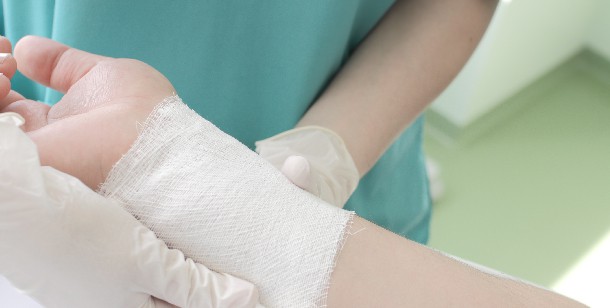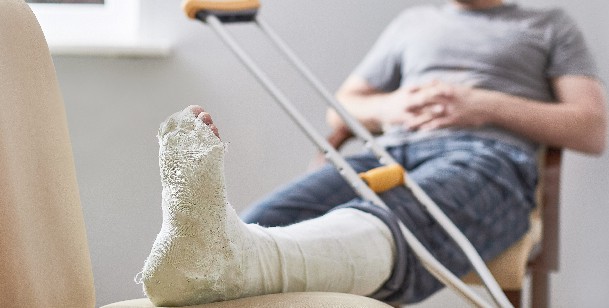A bone fracture is the medical term for a partial or complete crack of a bone, colloquially known as a broken bone. There are different types of fractures that require different levels of medical care, and different recovery times. Some breaks might be bad enough that you need to visit emergency care, while others may not. So, this poses the question, “can urgent care treat fractures?” This blog will discuss everything you need to know.

What Are the Types of Broken Bones?
Bones are slightly flexible and even capable of bending to a certain extent, however they will break if the force causing the bending is too much. The severity of the ensuing fracture is dependent on the force that caused it; if the force was only slightly too much, there is a chance the bone only cracks, instead of breaking completely. Conversely, if the force is way greater than the bone is able to handle, the bone will likely shatter in several places.
If a bone fracture pokes through the skin, this is called an open or compound fracture. Aside from the length of recovery time, compound fractures also have a higher risk of infection, due to the exposed bone and tissue. As such, compound fractures are always regarded as urgent, and require immediate medical attention.
Other types of fractures include stable fractures and hairline fractures. A stable fracture refers to a relatively simple bone fracture, where the broken ends of the bone still line up. On an x-ray, a stable fracture may only show up as a line with no space between the pieces.
Hairline fractures are a small, thin crack or bruise within a bone. Also known as a stress fracture or a partial fracture, hairline fractures are more severe than stable fractures, though the bone still is not completely broken or separated.

What Causes a Bone Fracture?
Bone fractures are caused by a variety of factors, the most common of which include trauma, overuse, and osteoporosis. Trauma is the term for any sudden, blunt impact incurred by the bone, like a fall or car accident. Those who play contact sports like football or martial arts are particularly vulnerable to trauma fractures, which can vary from stable to compound fractures.
Like our muscles, bones also accrue wear and tear over time. Repetitive motions and impacts gradually weaken our bones, making them more vulnerable to fracturing; this is especially true of the lower body. Overuse is also a common cause of hairline fractures, which more commonly occur in all athletes, including ones who do not participate in a contact sport.
Osteoporosis is a medical condition that weakens the bones, making them more susceptible to fractures. The U.S. government reports that about 1 in 10 people aged 50 and over have osteoporosis, with women being more likely to have the condition than men.

What Are the Symptoms of a Bone Fracture?
All of the different types of fractures come with pain in the affected area, and may leave you unable to move the damaged limb(s). Aside from pain, broken bones may also cause swelling, bruising, and even bleeding. Sometimes a bone fracture can be visible; the affected area may look out of place, or even puncture the skin in cases of compound fractures.
X-rays can be used to confirm if a bone fracture has occurred, and how severe it is. Your doctor may also opt for an MRI or CT scan to examine the affected area, including surrounding tissue. From here, doctors can decide which course of action to take for treatment.

How To Treat a Bone Fracture?
For relatively minor fractures, splints, casts, and braces are typically used to hold the broken bone in place while the injury heals. Patients can expect to wear these for several weeks or sometimes months, depending on severity.
On the other hand, more severe fractures may require surgery to reconnect the pieces. In some cases, doctors will use screws, metal plates, and/or rods to reconnect the broken bones. This process will more than likely involve pain medication to mitigate pain or other symptoms.
When to Visit Village Emergency Center?
A bone fracture requires immediate attention to prevent further injury or complications. Your local emergency room is capable of quickly providing treatment for most stable and hairline fractures, such as setting broken bones and performing x-rays. Our rooms are open 24/7, meaning you can always access the care you need.
So can urgent care treat fractures? In most cases yes, your local emergency room will be able to provide treatment for a bone fracture. However in more serious cases, such as when there is heavy bleeding, visible deformity/disconnects, or compound fractures that protrude the skin, either call 911 or go directly to a larger emergency room.

